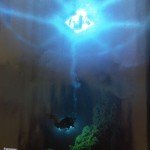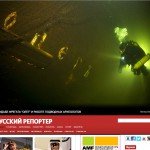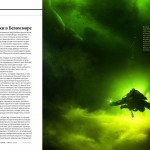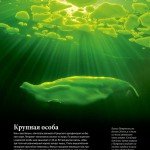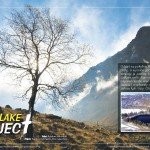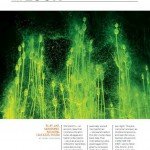 Stoneworts — an ancient class that combines the attributes of algae and higher-order plants — serve as a source of food for waterfowl, especially during autumn migrations.
Stoneworts — an ancient class that combines the attributes of algae and higher-order plants — serve as a source of food for waterfowl, especially during autumn migrations.
Wrapped in a weightless veil of cladophoraceae algae —
poetically named mermaid’s hair — stoneworts adorn this 260-meter-deep karst lake, their mild radiancy juxtaposed against the gloomy rock walls of the deep. When exposed to sunlight or strobes, stoneworts start to shed their own light. This phenomenon is known as photoluminescence, and lasts for only a fraction of a second.
HOW I GOT THE SHOT I used a Nikon D3s, 60mm, f/2.8, Subal housing, and two Ikelite DS160 substrobes mounted on the camera.
Where: Blue Lake, Kabardino-Balkaria, Caucasus, Russia
by Viktor Lyagushkin
Look Section, Scuba Diving Magazine (USA) March/April 2013
 Underwater America is a title of the piece on underwater archaeology by Alexander Grek, Editor-In-Chief of National Geographic Russia, illustrated with marvelous photography by Viktor Lyagushkin.
Underwater America is a title of the piece on underwater archaeology by Alexander Grek, Editor-In-Chief of National Geographic Russia, illustrated with marvelous photography by Viktor Lyagushkin.
